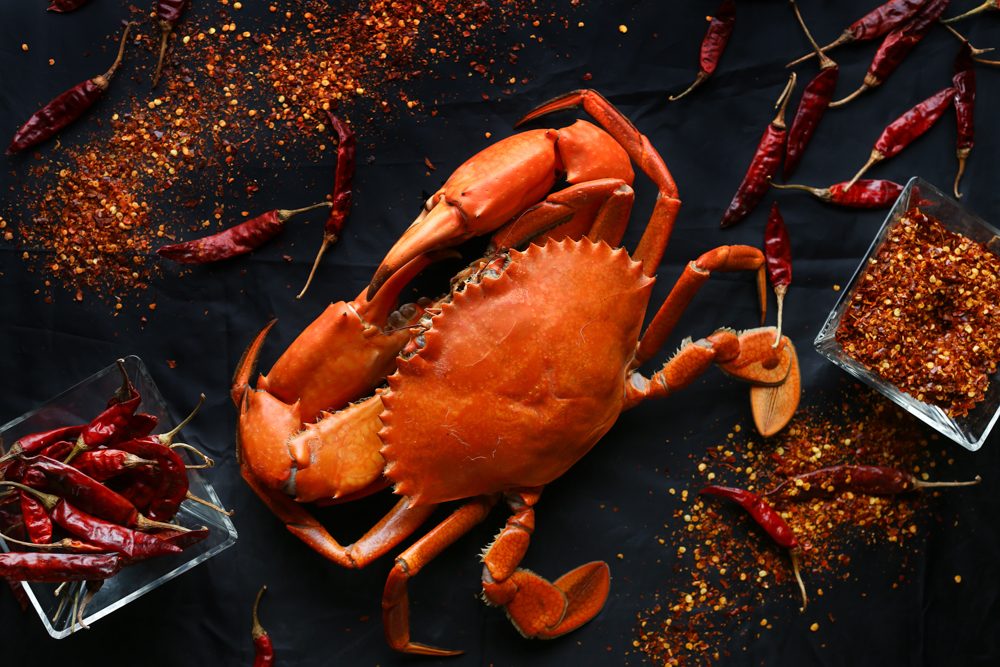
- Home
- About Us
- Philosophy
- Accolades
- Meet the Ministers
- The Menu
- Hansard
- Pop-Ups
- Concept Store
- Reservations
- Select a Location
- Contact Us
Chilli, though small in size, transforms any dish into a gastronomic delight with a rush of flavour.
A hearty Sri Lankan meal would never be complete without this crimson, tongue-tingling spice.

In Sri Lankan cuisine, red chill undoubtedly has royal status. With a hot streak on the tastebuds or by adding an appetizing red tinge to curries, the spice makes its presence known. In fact, for Sri Lankans, a dish is never complete without a good dose of Chilli. Thus, the elongated bright red fruit has become an important part of the identity of Sri Lankan cuisine. Hence, it is no wonder many assume that Chilli is native to the country. However, contrary to popular belief, the bright red spice is not even native to Asia, and had crossed many seas to reach the paradise isle in the Indian Ocean. The name ‘Chilli’ originates from Nahuatl language spoken by one of the early tribes in Middle America. The first known records of domesticated Chilli originate from Middle America and date back to 7,500 BC. The global expansion of the spice is believed to have begun in the15thCentury when Christopher Columbus was voyaging to India in search of Black Pepper that was at the time a spice akin to gold in value. Instead, the explorer landed on the Caribbean Islands, and encountered the red Chilli. Together with his crew, Columbus is believed to have brought Chilli back to the Iberian Peninsula. Decades later, the Portuguese began to spread favour for the spice across the Asian regions, and as the Portuguese ships landed on Sri Lankan shores in the 16thCentury, they brought the red Chilli along with them and introduced it to the island. When Chilli made an appearance, the choice spice in Sri Lankan kitchens was black pepper, called ‘Miris ’in Sinhala. The islanders first referred to the spice as ‘Rata Miris’ or ‘foreign Chilli’. Soon the scarlet spice had successfully won the hearts of the Sri Lankans and became the island’s default ‘Miris’, while black pepper was renamed ‘Gammiris ’or ‘ local Chilli’. Centuries later, red Chilli continues to be a popular spice for the island’s palate and a major cash crop with the annual island requirement exceeding50,000 metric tons. Moreover, just as the spice enhances our meals with flavour, it also enriches the economy by creating thousands of employment opportunities.
The name ‘Chilli ’originates from Nahuatl language spoken by one of the early tribes in Middle America. The first known records of domesticated Chilli originate from Middle America and date back to 7,500 BC

Red chilli has been quick to take to the island’s soil and is grown nearly all across Sri Lanka, both in home gardens and large vegetable fields. The plant especially thrive in the dry and intermediate zones of the country and chill cultivations are common in the north, north central and eastern provinces. Shaded in green, yellow, red and orange amidst the foliage, these fields make fora pleasant sight. While raw green chillies are popularly added tothe curries, Sri Lankans preferred chilli in the form of powder ordried flakes. Shriveled and dried whole red chilies are also used to prepare island dishes. Hence, once plucked, the red chillies are dried in the sun for days until they acquire exactly the right degree of pungency. They are sorted with some piles being milled to chilli powder or chilli flakes. Thereafter the various types of chilli take their place in Sri Lankan kitchens, ready to transform wholesome meals into delicious dishes with a piquant flavour that entertains the tastebuds.